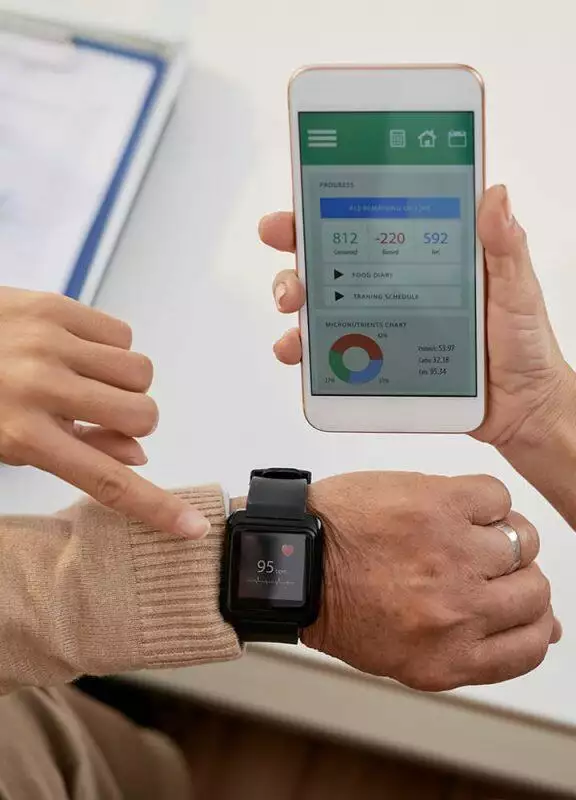Three Key Lessons for Digital Healthcare from the Consumer and Service Industries
As healthcare seeks to expand its digital healthcare services and better-serve patients, the industry would be well-served to adopt several key learnings from the consumer products and service industries.

No one can deny the pandemic’s impact on the healthcare industry. While the pandemic has obviously strained healthcare capacity and workers, it has also helped evolve care delivery through non-traditional channels, particularly digital. This significant change towards digital healthcare has created a tremendous opportunity for healthcare to reimagine itself within the context of a digital environment.
The challenge is that the healthcare industry has historically been behind other industries in offering impactful patient-facing digital technologies. Compare healthcare, for example, with financial services, allowing consumers to manage all their finances from a smartphone. It’s a similar story with online shopping, which has rapidly allowed consumers to conduct transactions on practically anything from the convenience of their homes.
As healthcare seeks to expand its digital services and better-serve patients, the industry would be well-served to adopt a new patient-centric mindset based on several key digital learnings from the consumer products and service industries. Why? Because as a general rule, these industries have developed their digital products based on valuing and embracing consumers’ needs and loyalty, regularly applying a test-and-adapt process to product and service development, and never wavering from knowing the consumer experience matters far more than any shiny new technology.
The New Digital Norm
In digital services, there is now a single, fundamental truth: the new normal is about being consumer-obsessed, delighting consumers and exceeding their expectations. Whether in healthcare or elsewhere, organizations that embrace this reality will rise to the top; those that don’t will likely be left behind.
For example, Netflix upended the movie industry by providing digital viewing options at the convenience of the consumer. Peloton revolutionized the fitness industry through engaging, digitally based personal experiences. Delta Airlines won top industry ratings with its focus on improving the entire consumer travel experience, from online to in-person. Is there any reason your healthcare organization couldn’t deliver similar results within its sphere of service and influence?
Based on my years of experience in consumer products and services, and now in healthcare, here are three key lessons to apply from the consumer realm to the healthcare industry:
- Become “one” with your patients/customers – understand and address their core needs
- Be open to learning through a test-and-adapt process – don’t think that you have to know it all up-front
- It’s not about the “thing” or fancy new technology – it’s about the experience
Become “One”
In consumer products and healthcare, I have seen many ways in which “consumer research” has been done well, and also poorly. Satisfaction surveys are often not specific enough to support informed and nimble decision-making around digital healthcare. Consumer focus groups may provide more detailed information, but they are usually a means of getting feedback on an already baked product or experience, so the conversation may already be boxed in, limiting true insights.
The best method I have seen to germinate truly innovative consumer ideas is through human-centered design, which considers the human perspective in all stages of the problem-solving process. In a clinical setting, this means humanizing patient experiences in order to meet emotional as well as clinical needs. For example, understand the lives of patients and family members; learn how they prioritize their time and finances; find out what keeps them up at night and what would make their lives easier. This is where innovation and prioritization truly start as you create your consumer-centric digital strategy.
Become “Open”
Being open in healthcare means that even if you have been in the industry for years, through countless changes, and/or helped grow your area of practice, you can always learn more from your end-consumers. Once you have gained true consumer insights – by walking in their shoes and conceiving ideas based on this input – test and learn. Do not wait for a “perfect” idea, but proceed and adjust as needed – the essence of agile thinking.
Creating a service, product or experience in any industry can be daunting, since the investment and delivery timelines can be significant. It is far faster and less expensive to experiment or prototype and improve than be sold on an idea, make significant investments, develop the product or experience over months or years, and learn only then if this is what consumers actually want.
Instead, test early. Learn and adapt quickly. Grow your test, learn, adapt and then deliver. Consumer companies are experts at this process. It’s an approach that should be fundamental table stakes for developing new ways of digital healthcare.
It’s Not About the “Thing”
Remember “Google Glass,” the digitally connected eyeglasses that “experts” once predicted would change the world? This product idea died after just three years in the market due to technical glitches, impracticality, privacy concerns and outright product bans. A word to the wise: be careful not to be enamored of anything shiny and new.
Rather than focusing on fanciful digital tools, like chat, bots, artificial intelligence, Internet of Things, and more, think instead how your efforts support patients’ healthcare experiences. Your priority hierarchy should be anchored to the consumer experience and how technology can make that experience better.
Learn From Patients
Patients can be amazing allies and advocates for their own health, and in the process dramatically improve their care outcomes. Plus, patients as consumers have an infinitely valuable outside-in perspective. They can directly provide you with perspectives on what it actually means to receive care, engage with your organization, make sense of costs or payments, understand the value of your services, and/or explain what they truly need to live their daily lives.
As healthcare continues along this new landscape of digital technology applied to patient experiences, applying key lessons from the consumer and service industries can help you forge your best path forward.
Link to Published Article (may require registration)
https://www.healthcarebusinesstoday.com/lessons-digital-health-care-consumer-service-industries/
https://electronichealthreporter.com/three-key-lessons-for-digital-healthcare-from-the-consumer-and-service-industries/
https://hitconsultant.net/2022/05/11/digital-tech-from-consumer-and-service-industries/


